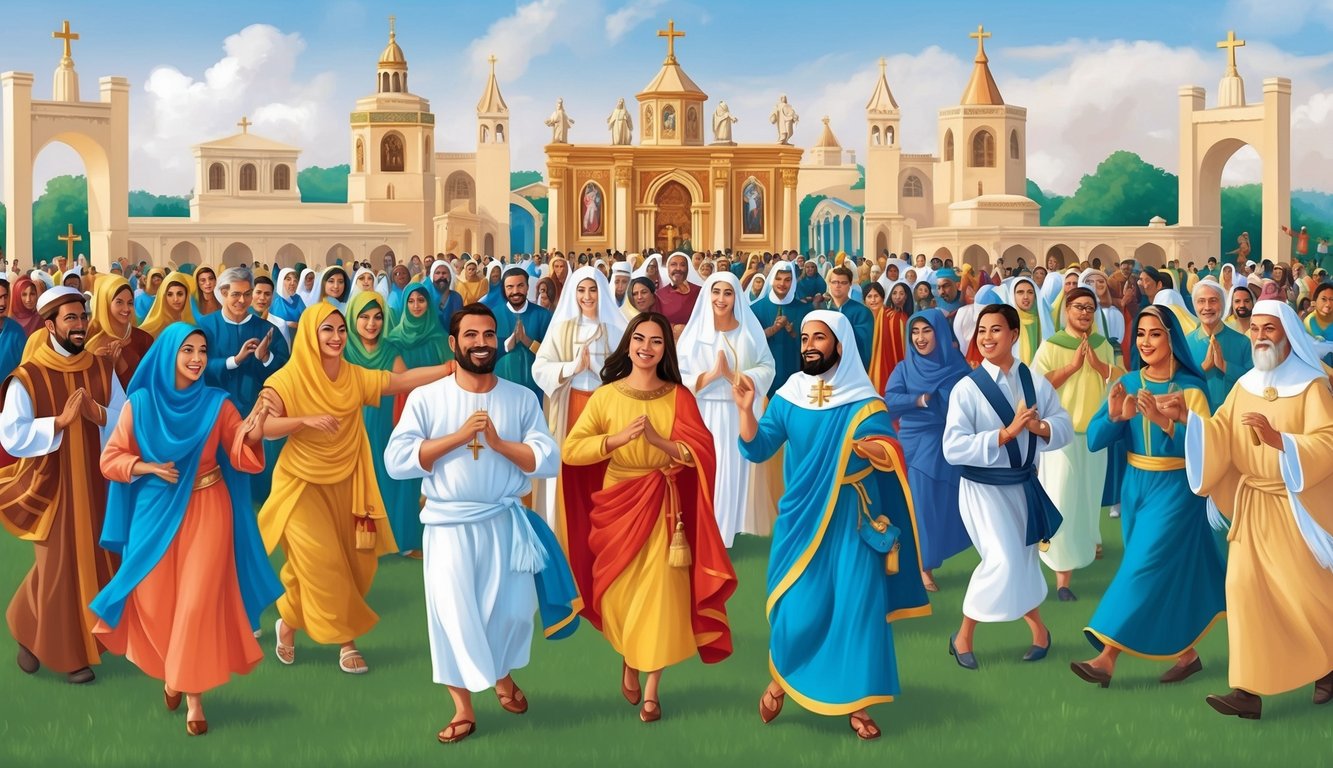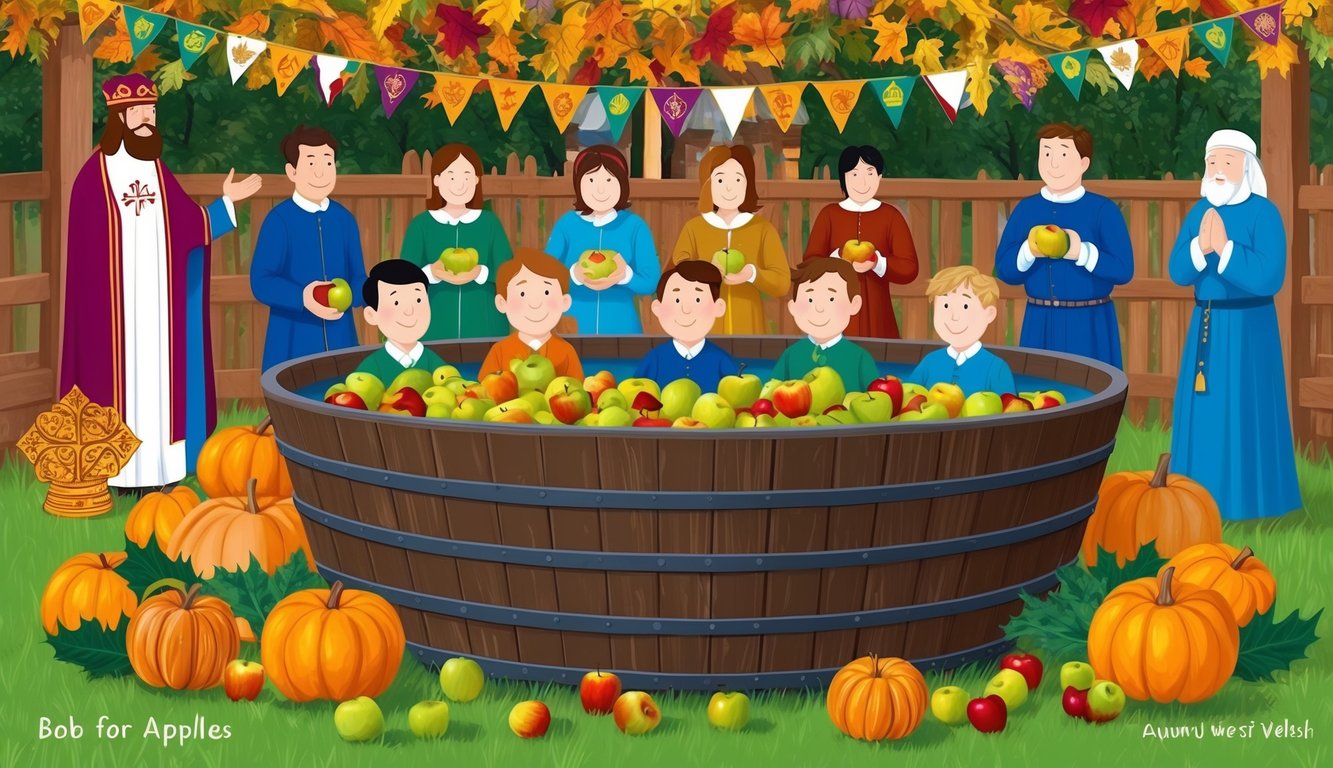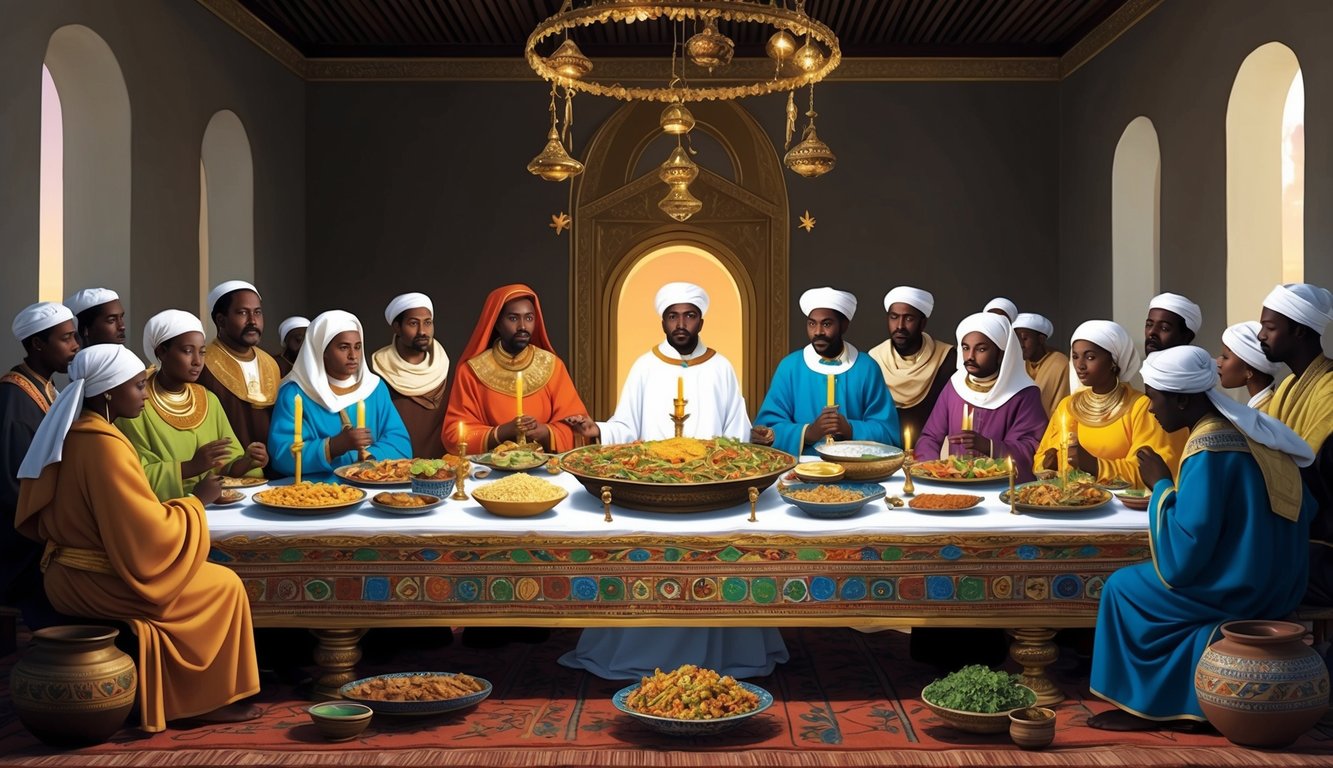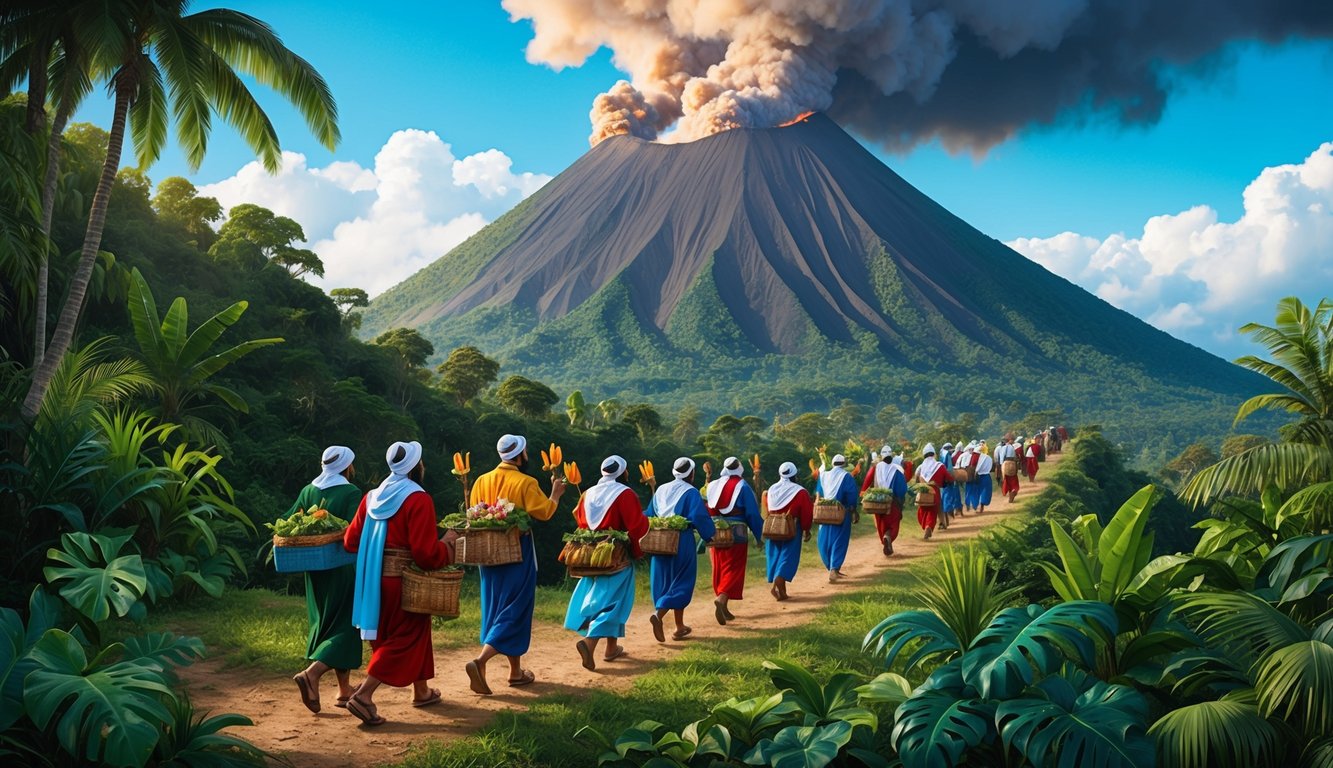Don’t Miss Out On This Unique Astrological Opportunity
Are you tired of spinning your wheels and getting nowhere? Simply put, you’re out of sync: you’re out of alignment with your astral configuration.
But: there’s a kind of map that can help you reclaim your alignment. Think of it as your own personal blueprint to success and happiness: a blueprint that will help you live your most amazing life.
Get started here.
Christianity is a faith that spans the globe, filled with diverse traditions and practices.
From lively celebrations to quiet rituals, these customs reflect how believers express their faith and cultural heritage. You may be surprised to learn about the unique ways Christians celebrate their beliefs, showcasing creativity and devotion that go beyond the familiar practices.

Exploring these traditions can offer a deeper appreciation for the richness of your faith and how it connects you to others worldwide.
Each unique practice reveals a different story and a glimpse into the hearts of communities.
It is fascinating to see how geography and culture shape these expressions of spirituality.
Jumping the Broom in Bantu Ceremonies

Jumping the broom is a meaningful tradition in many Bantu wedding ceremonies.
This custom symbolizes the start of a new life together.
In these ceremonies, the broom represents cleansing and protection.
By jumping over the broom, couples invite good spirits into their marriage.
It is a way to honor their ancestors and the resilience of their culture.
The act of jumping is also a celebration of unity and commitment.
Couples demonstrate their readiness to build a family and nurture their relationship.
Although this practice has roots in various cultures, it holds special significance in Bantu communities.
It connects modern couples to their heritage while highlighting the importance of family bonds.
Participating in this tradition can make your wedding unique and deeply personal.
It encourages reflection on the values and history that shape your journey together.
Bobbing for Apples at Welsh Harvest

Bobbing for apples is a fun tradition you might enjoy during Welsh harvest festivals.
This game involves trying to catch floating apples with your teeth while keeping your hands behind your back.
In Wales, this game connects to harvest time, celebrating the fruits of the season.
It is not just about the thrill of the game, but also about gathering with family and friends.
During these festivals, you will find the air filled with laughter.
Participants of all ages join in the excitement, making it a memorable experience.
The game may have originated as a courtship ritual in ancient times, but today it is all about joy and community spirit.
You can often hear cheers and playful shouts while everyone takes turns.
This friendly competition adds to the festive atmosphere of harvest celebrations in Wales.
It reminds you of the importance of togetherness and the simple joys of life.
Festivals of Saint Anthony in Brazil
In Brazil, the festival honoring Saint Anthony is a vibrant celebration.
It usually takes place in June, especially around his feast day on June 13th.
You’ll find many colorful decorations and lively music during these festivities.
People gather for traditional dances, such as forró, which is a folk dance that brings the community together.
One notable part of the celebration includes special foods.
You can taste dishes like corn cakes and sweet popcorn, which are popular during the June festivals.
Saint Anthony is known as the patron saint of lovers.
Many people take part in rituals to seek his blessings for love and marriage.
It’s common to see offerings and prayers to him during this time.
The festival not only focuses on religious aspects but also highlights Brazilian culture.
The colorful clothing, joyful music, and delicious food create a warm and inviting atmosphere for everyone.
Participating in this festival allows you to experience Brazil’s strong sense of community and faith.
4) Fasting During Nativity in Ethiopia

In Ethiopia, the Nativity Fast is a special time for many Christians.
This fasting period starts on November 25 and lasts until January 7.
It focuses on spiritual reflection and preparation for Christmas, known as Gena.
During this fast, you may notice that most Ethiopians follow a vegan diet.
They avoid meat, dairy, eggs, and even oil.
This practice helps them feel closer to God and ready for the celebration of Christ’s birth.
Many people use this time to pray and attend church services more often.
The fast encourages a sense of community as families and friends come together in support of one another.
By participating in the Nativity Fast, you join a tradition that has deep roots in Ethiopia.
It shows how faith, culture, and food can come together in meaningful ways.
5) Colorful Easter Palms in Poland

In Poland, Easter is celebrated with a unique tradition involving colorful palms.
On Palm Sunday, you may see interesting and beautiful palm decorations everywhere.
These palms are often made from dried plants like willow, pussy willows, or colorful branches.
Since palm trees do not grow in Poland, people use local plants instead.
Many towns have competitions for the most creative and tallest palms.
Families take great care in making their palms special and unique.
Once the palms are blessed at church, they are hung in homes as a symbol of good luck.
They stay there until the next Palm Sunday, when they are replaced by new ones.
This practice blends Christian beliefs with local customs.
It shows how traditions can bring communities together during the Easter season.
Tongan Royal Kava Ceremony

The Tongan Royal Kava Ceremony is a rich tradition that plays a key role in Tongan culture.
During this ceremony, important leaders and members of the royal family gather to honor the king.
Kava, made from the root of the Piper methysticum plant, is central to this event.
It is prepared and served in a special way, following customs that have been passed down through generations.
As the kava is shared, it symbolizes unity and respect among participants.
This ritual not only marks significant occasions, like the installation of a new king, but also reinforces community bonds.
The ceremony reflects deep cultural beliefs and serves as a reminder of the responsibilities that come with leadership.
It shows how traditions can blend with faith and community values in unique ways.
Being part of such an event can be a moving experience, allowing you to witness the beauty of Tongan heritage.
The kava ceremony connects the past to the present, highlighting the importance of ceremonies in expressing shared beliefs.
7) Volcano Pilgrimage in Indonesia

In Indonesia, a unique tradition combines faith and nature through the volcano pilgrimage.
One of the most famous events is the Yadnya Kasada Festival at Mount Bromo.
During this festival, local people climb the active volcano to offer food and livestock to the gods.
They believe these offerings bring blessings and prosperity to their families.
Visitors from around the world come to witness this vibrant celebration.
The festival has deep roots in ancient legends, adding a sense of mystique to the experience.
Participating in this pilgrimage provides a meaningful way to connect with local culture and spirituality.
You can enjoy breathtaking views of the volcano while learning about the unique beliefs of the people.
This blend of nature, tradition, and devotion makes the volcano pilgrimage a fascinating experience for anyone interested in exploring different Christian traditions around the globe.
8) Cemetery Picnics in Guatemala
In Guatemala, cemeteries come alive during special celebrations like All Saints’ Day.
Families gather at gravesites to honor their loved ones and share joyful moments.
Instead of a somber atmosphere, you will find vibrant colors, music, and laughter.
People bring food and drinks to enjoy a picnic right on the graves.
It’s common to see traditional dishes such as tamales, fruits, and sweet treats.
Families celebrate the lives of those who have passed, reflecting a rich blend of grief and joy.
Colorful decorations often fill the cemetery.
You might see tall, handmade kites soaring above, symbolizing the connection to the spiritual world.
This unique tradition shows how Guatemalans cherish their heritage and embrace life, even when remembering those who are gone.
It’s a beautiful way to stay connected with family and keep memories alive.
9) Kiribati Faith Dance Troupes

In Kiribati, dance is an important part of expressing faith and telling stories.
Many communities have faith dance troupes that perform during special religious events and celebrations.
These dance groups often include both children and adults.
They dress in bright, traditional costumes that reflect their culture.
The movements help to convey messages of faith, hope, and community.
Dancers might tell stories from the Bible or share local legends through their performance.
This type of storytelling keeps traditions alive and connects people with their heritage.
The music that accompanies the dances is equally important.
It typically features drums and simple instruments, creating a lively atmosphere that encourages participation.
Watching a faith dance performance can be a powerful experience.
It allows you to see how faith is woven into everyday life in Kiribati.
These dance troupes bring people together, fostering a sense of belonging and shared belief.
Historical Overview Of Christian Traditions
Christian traditions have evolved significantly over centuries.
Understanding their roots can help you appreciate the diversity and depth of practices today.
Let’s look at key milestones in their development and how cultural exchanges shaped them.
These traditions have been influenced by historical events, theological debates, and shifts in societal values.
At various points in history, cultural pressure on Christians led to adaptations in worship styles, religious observances, and even doctrinal interpretations.
As a result, modern Christianity reflects a blend of ancient customs and contemporary influences, making it a dynamic and evolving faith.
Early Development Of Traditions
The early Christian church began to form soon after the life of Jesus Christ.
In the first few centuries, practices like baptism and the Eucharist took shape, marking the initiation and communion within the faith.
As churches spread, so did differing customs.
For instance, different regions adopted unique styles of worship, influenced by local cultures.
By the 4th century, Christianity became the official religion of the Roman Empire, which helped standardize many practices.
Traditions such as Christmas and Easter also began during this time, with their dates and celebrations rooted in earlier pagan festivals.
These early practices laid the groundwork for the rich variety of traditions found in Christianity today.
Influence Of Cultural Exchanges
As Christianity spread across continents, it interacted with various cultures.
This cultural exchange significantly influenced how traditions developed.
For example, when Christianity reached Africa and Asia, it blended local customs with church practices.
In Ethiopia, Christians incorporated traditional music into their services.
Similarly, in Latin America, indigenous beliefs influenced celebrations like Dia de los Muertos, creating unique traditions.
Modern global communication continues this blending.
You can see traditional practices from one place adopted in another, enriching the Christian experience.
This adaptability is one reason why Christianity remains relevant across diverse cultures today.
Regional Variations
Christian traditions can vary greatly across different regions.
These variations reflect local cultures and histories, making each practice unique.
Let’s look at Christian practices in Africa and Latin America.
African Christian Practices
In Africa, Christianity blends with traditional beliefs and customs. Vibrant celebrations often include music, dance, and colorful attire.
Notable practices include:
- Palm Sunday: This day is marked with processions and lively singing, where participants wave palm branches.
- Easter: Many communities celebrate with drumming and dancing, often seen as both worship and cultural expression.
Religious gatherings may also feature local food, creating a communal atmosphere.
This emphasis on community and joy reflects the importance of faith in daily life.
Latin American Celebrations
Christianity in Latin America is rich with festive and colorful traditions. Holidays combine religious observance and local culture.
Key examples include:
- Día de los Muertos (Day of the Dead): While not solely a Christian holiday, this day reflects the blend of Catholicism and indigenous practices, honoring deceased loved ones with altars and offerings.
- Semana Santa (Holy Week): This week includes elaborate parades, reenactments of the Passion, and community involvement.
These celebrations often involve family gatherings and joyful expressions of faith, showcasing the deep connection between religious beliefs and regional culture.
Frequently Asked Questions
Christian traditions can be quite varied and interesting.
Here are some commonly asked questions about unique customs, celebrations, and how these practices differ around the world.
What are some unique Christian customs from different parts of the world?
Many cultures have special customs that are tied to their Christian faith.
In some Bantu ceremonies, for example, “Jumping the Broom” symbolizes a couple’s commitment.
In Wales, bobbing for apples is part of the harvest festivities, celebrating faith and community together.
Can you describe five significant traditions of Christianity?
Five key traditions in Christianity include baptism, confirmation, celebrating Easter, observing Lent, and marriage ceremonies.
Each tradition represents important aspects of faith and community, varying from one culture to another while maintaining shared beliefs.
What are examples of Christian celebrations and feasts commonly observed worldwide?
Christian celebrations often include Christmas, Easter, and Pentecost.
In addition, many cultures have unique local feasts, such as Festivals of Saint Anthony in Brazil.
These events bring communities together to honor their faith through special meals, prayers, and activities.
In what ways do Christian traditions and rituals vary internationally?
Internationally, Christian traditions can look quite different.
For instance, fasting during Nativity is common in Ethiopia, while in Poland, colorful Easter palms are a significant part of the celebration.
These variations reflect local customs and historical influences on faith practices.
Which church traditions are believed to not be directly based on biblical scripture?
Some traditions, like certain customs around marriage or local feast days, may not have direct biblical roots.
Instead, they often arise from cultural practices that have been adapted over time within various Christian communities.
How do Christian cultural practices differ from one country to another?
Christian cultural practices differ widely from country to country.
Each nation brings its own history, traditions, and influences, leading to unique expressions of faith.
This diversity enriches the global Christian community while still holding core beliefs in common.



